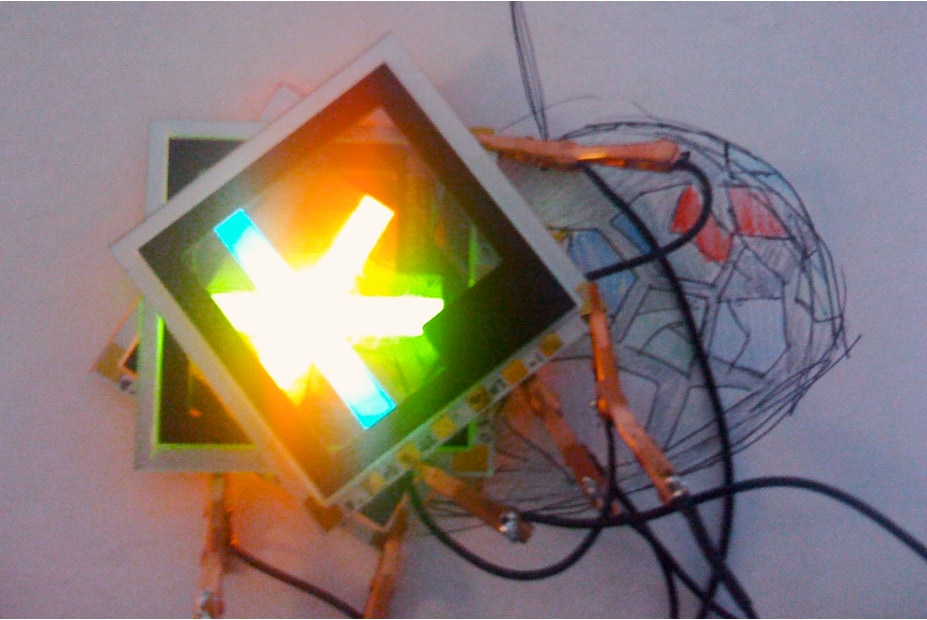TLO and TLO 2
for Universal Display Corporation
2010 / 2014
Background
While looking at some transparent OLED samples UDC researchers were testing, I noticed something interesting - when overlapped the colors combined in an additive manner: red and green produced yellow, red and blue produced magenta, overlapping red, green, and blue produced white.
Typical transparent colored materials, such as colored gels, are transmissive, and combine colors in a subtractive manner, so overlapping red, green and blue would block all light and become black. However, OLED panels are emissive, so colors passing through multiple panels combine additively, which was unexpected and quite beautiful. This is also precisely how white OLED lighting panels are produced, as the red, green, and blue emissive molecules are the same as those used in a white OLED panel.
Design Brief
Create a sculptural object using red, green, and blue transparent OLED lighting panels. Structure it in such a way that at various angles different combinations of overlapping colors can be seen including all three colors combining to produce white. This would serve as an intuitive demonstration of how a white OLED panel is created.
Process
The first idea for what became the TLO was to create a faceted Tiffany-style lamp using transparent OLED panels. Various study models were made from paper, ultimately leading to a more free-from design, where the lamp could be folded and twisted to make the panels visually overlap.
Resolution
The TLO (Triangle Light Object or Trans- parent Light Origami) is made from 16 triangular lighting panels. Each panel is connected to the next with a friction hinge allowing the structure to be folded and bent into an endless variety of shapes.
The original (2010) TLO had a 3D-printed steel frame, painted black, with friction-hinges integrated into the frame. Each triangular panel was one quarter of a 6-inch square.
Later, in 2013, a new, bigger version of the TLO was designed where each triangle was only half of a 6-inch square, allowing for more transparency through the structure. In place of the metal frame, the panels were connected panel-to-panel with small machined-steel hinges that clamped onto the sides of the glass panels. This version didn’t have the mechanical strength to support itself so was designed as a hanging lamp
The original TLO was featured in Frame Magazine, Wired UK, and the book LUX: Lamps and Lights.
Stop Motion Video - Original TLO

Original TLO
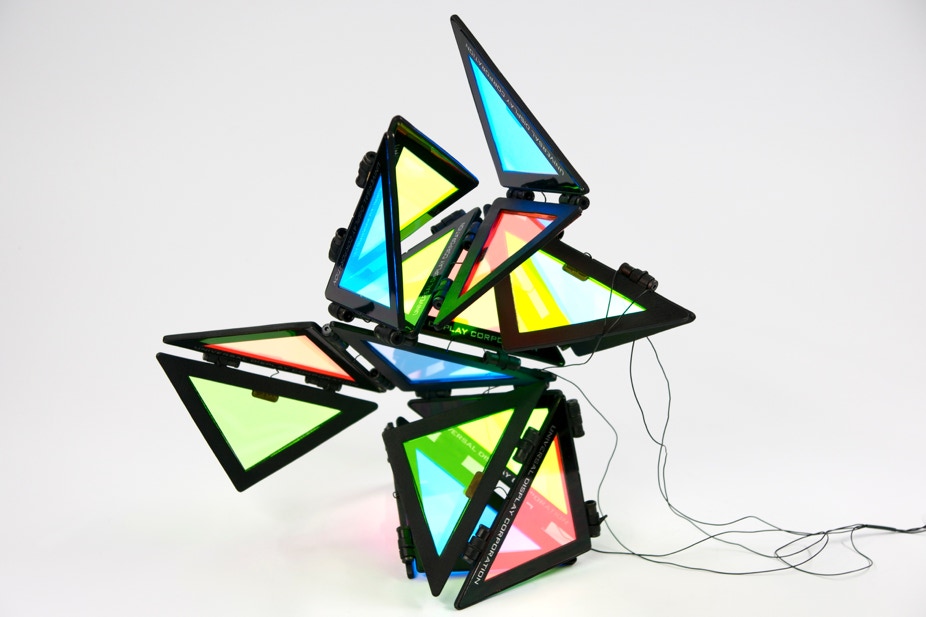
Original TLO

Original TLO
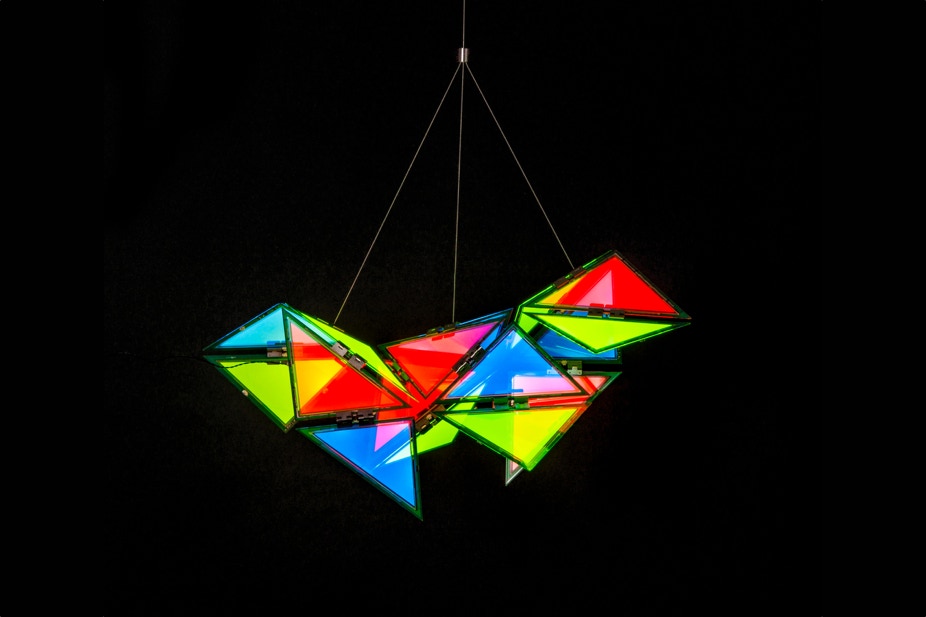
TLO 2
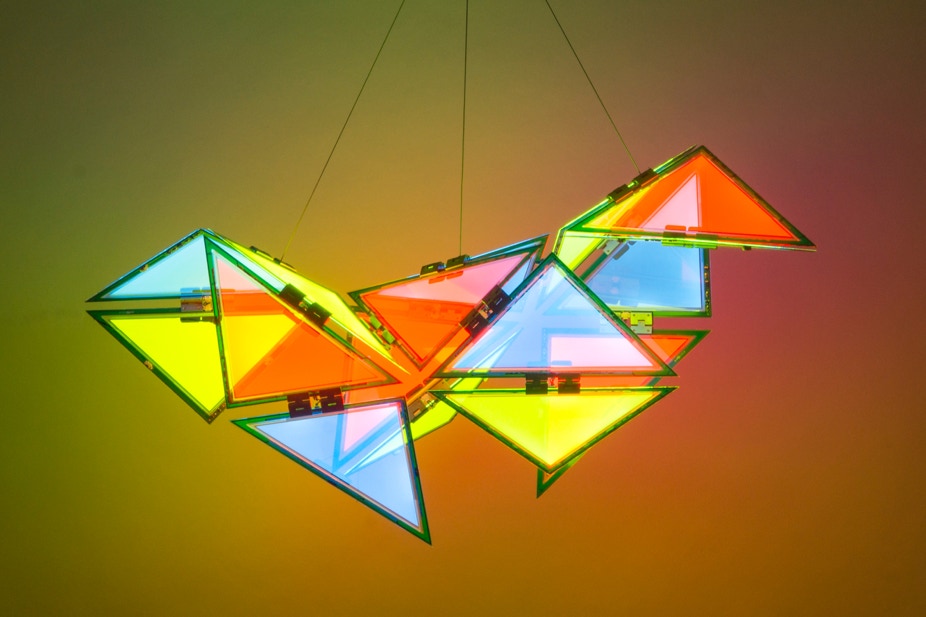
TLO 2
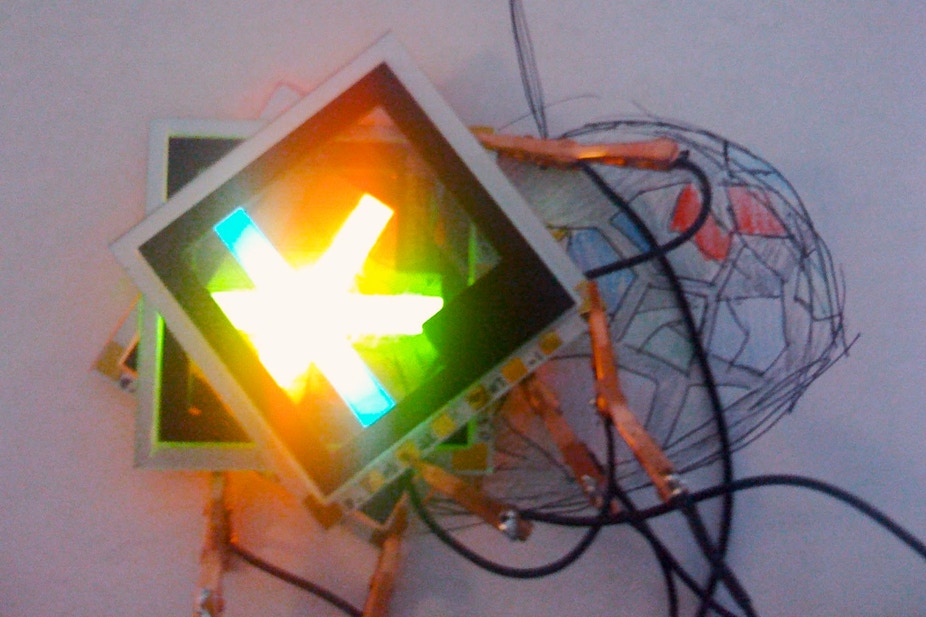
Transparent OLED Test Panels
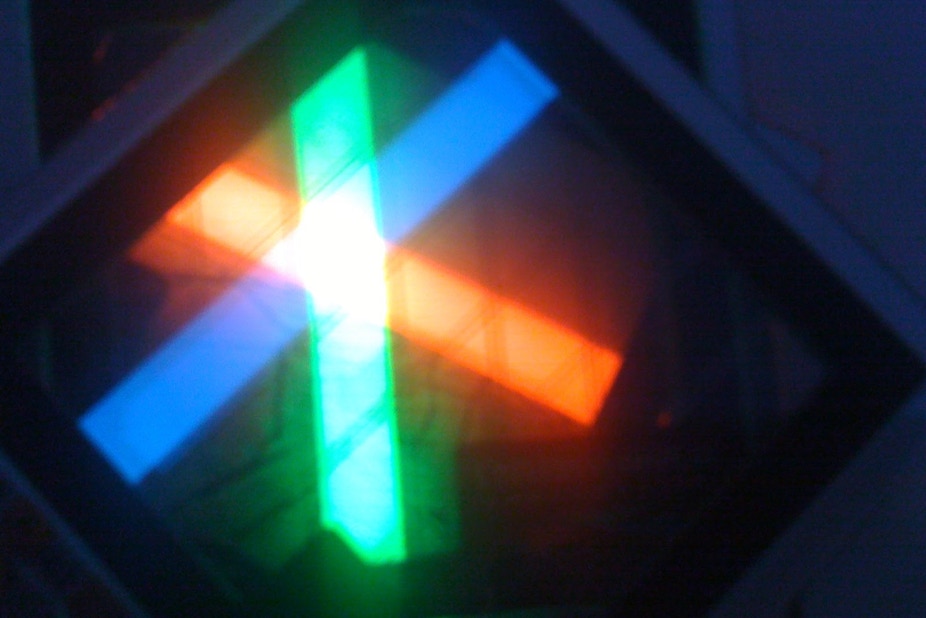
Transparent OLED Test Panels
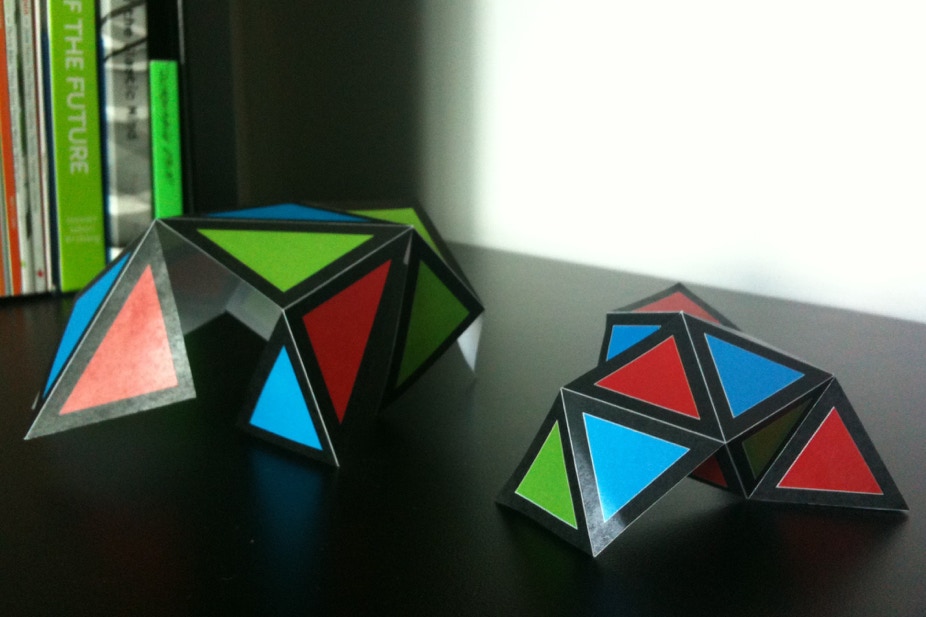
Paper Study Models
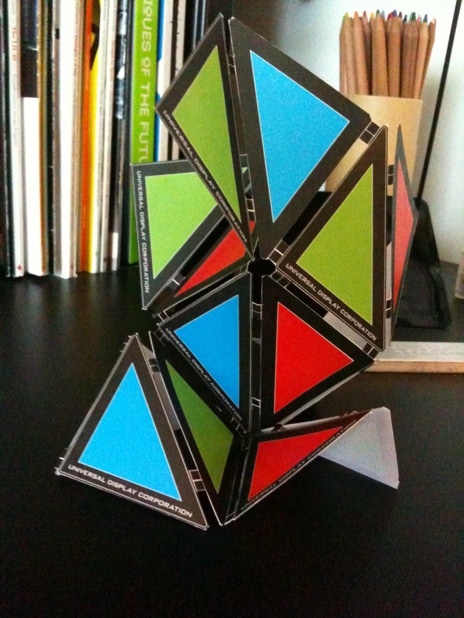
Paper Study Model
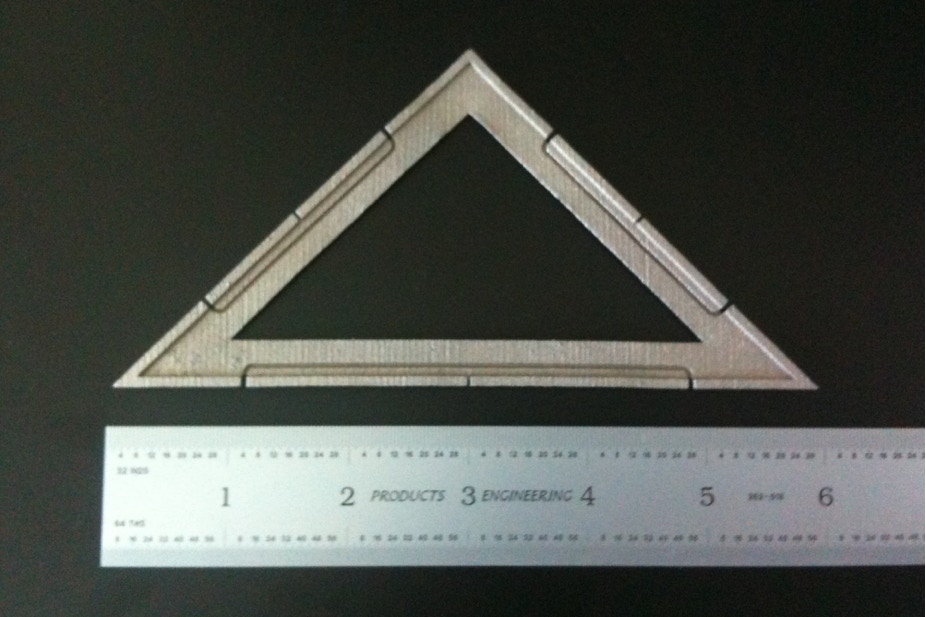
3D Printed Steel Frame Prototype - Original TLO
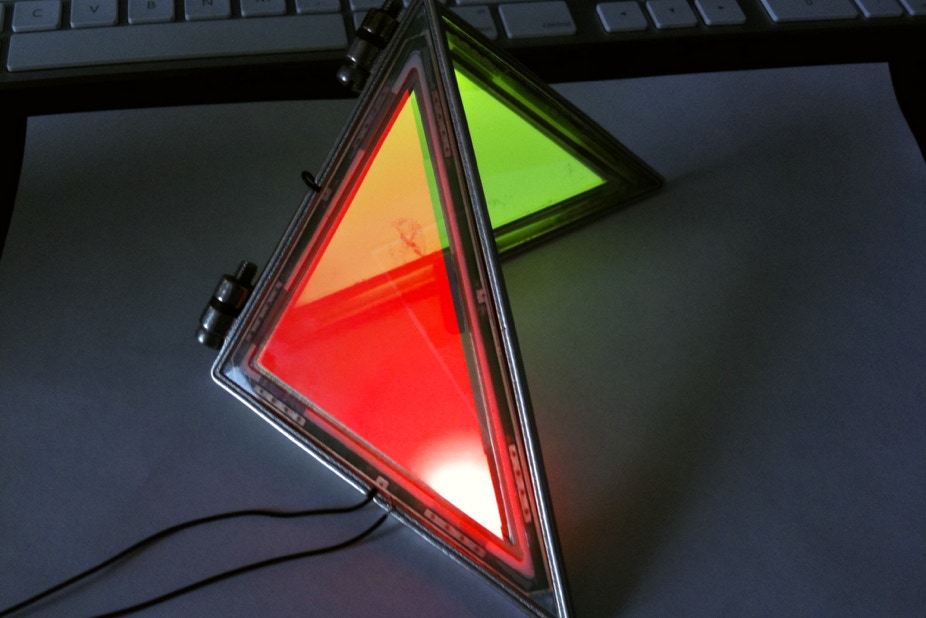
2 Panel Prototype
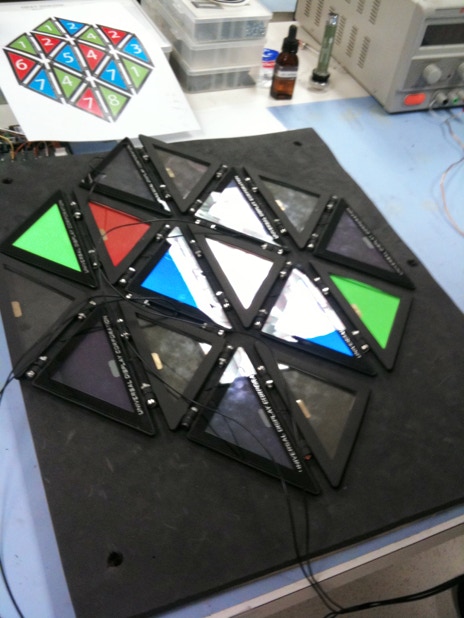
Assembly - Original TLO

Solidworks Rendering - Original TLO
